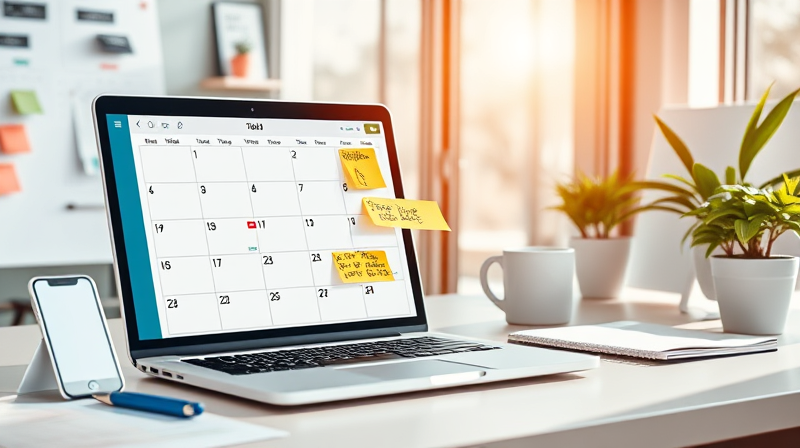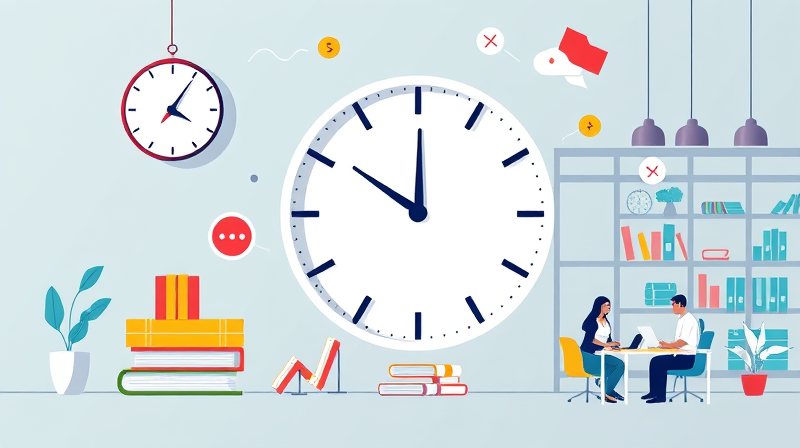In the modern work environment, efficiency is a coveted asset. With constant distractions and an overwhelming amount of tasks, mastering task prioritization is not just beneficial, it is essential. By leveraging proven frameworks and innovative tools, you can transform your daily routine, reduce stress, and significantly boost performance.
This article shares practical tips and encouraging strategies to help you rank your tasks effectively. The goal is to assist you in developing a systematic approach that simplifies your workload and optimizes your time management. Through a blend of modern technology and timeless techniques, you will find the balance between productivity and well-being.
Embracing Task Prioritization Frameworks
One of the key methods to boost efficiency is by using task prioritization frameworks. Among the most popular is the Eisenhower Matrix, which divides your tasks into four distinct quadrants based on urgency and importance. Here is how you can use it:
- Urgent and Important: Tackle these tasks immediately to prevent crises.
- Important but Not Urgent: Schedule these tasks for later, ensuring you allocate time and resources to achieve long-term goals.
- Urgent but Not Important: Delegate these tasks when possible, so your focus is reserved for high-impact activities.
- Neither Urgent nor Important: Consider eliminating these tasks to minimize distractions.
Another useful technique is the 1-3-5 Rule. This simple rule suggests that every day, you focus on one big task, three medium tasks, and five smaller ones. This prevents decision fatigue and ensures consistent progress across various fronts.
Implementing Effective Scheduling Techniques
Time management is central to productivity. Techniques such as Time Blocking allow you to allocate specific time slots for particular tasks. This method helps reduce multitasking and minimizes distractions by grouping similar activities into dedicated periods.
Another potent tool is the Pomodoro Technique. It breaks your work into focused 25-minute intervals with short breaks interspersed. This cycle not only boosts concentration but also prevents burnout over long stretches of work.
Simplifying Complex Projects
Breaking down big projects into smaller, manageable steps is highly effective. When projects are divided into actionable tasks, it becomes easier to track progress and maintain momentum. Additionally, digital automation tools such as Trello, Asana, and Zapier can handle repetitive tasks and manage reminders. Automating these processes decreases the likelihood of human error and frees up valuable time for creative and high-impact work.
Dealing with Quick Tasks and Workspace Organization
Handling quick tasks promptly is a strategy supported by the Two-Minute Rule. If any task takes less than two minutes to complete, do it immediately to avoid letting small chores accumulate. Incorporate this rule into your daily routine to keep your work list manageable.
An organized workspace is another cornerstone of boosted productivity. Keeping both your physical and digital spaces clutter-free can dramatically shorten the time you spend searching for items. Tools like Kanban boards are particularly useful because they provide a visual representation of your tasks. By tracking progress in categories such as "To-Do," "In Progress," and "Completed," you maintain a sense of control and clarity.
Learning to Say No and Building Solid Habits
One of the most empowering strategies is learning when to say "no." Avoiding tasks or meetings that do not align with your priorities can free up time for more valuable work. This decisive step is vital for maintaining focus on your key objectives.
Building and maintaining strong habits is a transformative process. Establishing daily and weekly planning routines can help you stay on track with your tasks. For instance, take a few minutes at the end of each day to review and adjust your to-do list for the day ahead. A mix of digital tools and traditional journals can assist in reinforcing these routines, thereby engaging your memory and sharpening your focus.
Boosting Productivity with Innovative Techniques
Incorporate productivity-boosting techniques such as the "Eat That Frog" method. This involves starting your day with the most challenging or significant task. Once you overcome that hurdle, the rest of your day seems more manageable and productive. Other strategies, such as batching similar tasks together, reduce wasted time from constant context switching, and create a more streamlined workflow.
Technology plays a critical role in enhancing productivity. Leverage task management apps like Todoist, Asana, or Microsoft To Do to keep your tasks organized. For larger projects, explore platforms like Monday.com or Basecamp that facilitate team collaboration while tracking progress effectively.
Balancing Work and Personal Life
Maintaining a healthy work-life balance is the final, but equally important, piece of the productivity puzzle. Schedule regular breaks and ensure you have some down time. Techniques like the 90-minute work cycle can provide the perfect balance between intensive work sessions and rest periods. Digital detox times or muting non-essential notifications can protect your focus and well-being.
By embracing these strategies, you will be well-equipped to rank your tasks efficiently and boost productivity throughout your workday. Adopting these approaches not only enhances your professional output but also contributes to a more balanced and fulfilling life. Remember, the journey to improved efficiency starts with small changes that grow into significant improvements over time.
Ultimately, the path to productivity is personal, and by experimenting with these methods, you can find what works best for you. Step confidently into a future where every day is a step toward achieving your most ambitious goals.








